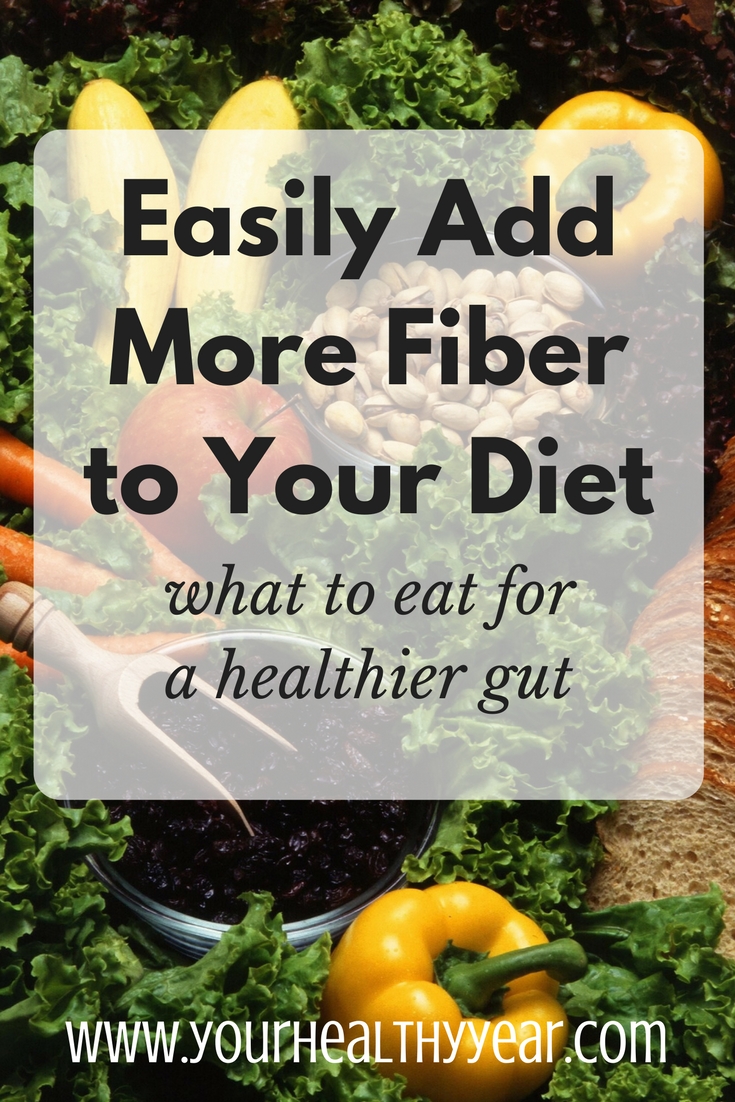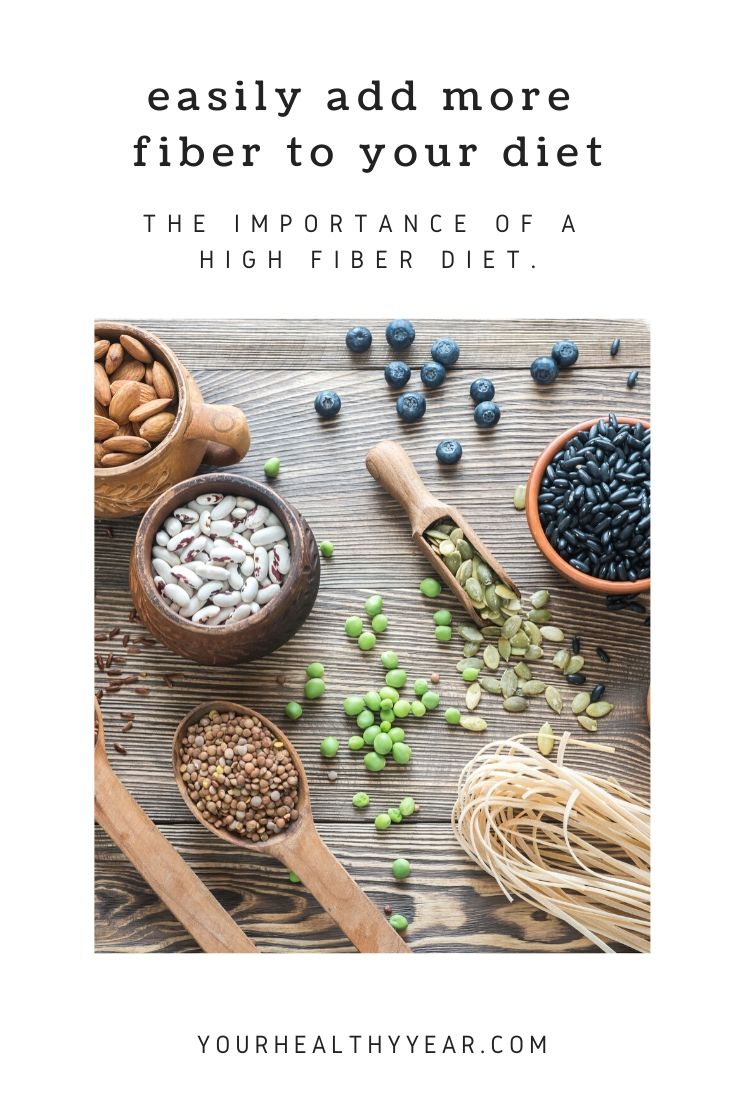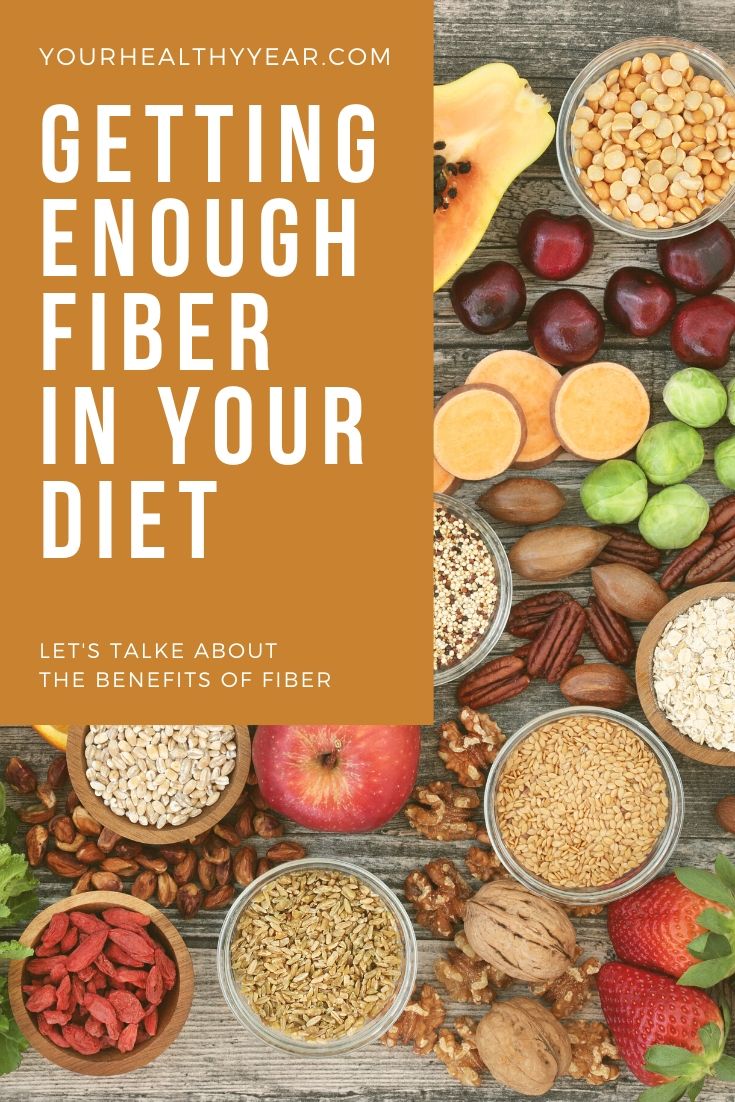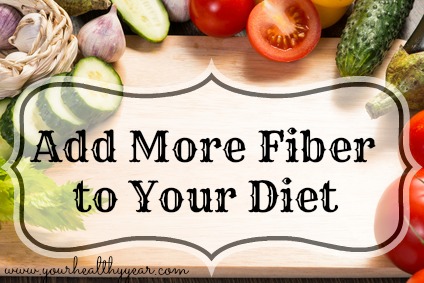Did you know that the daily recommended intake of fiber is 20-30 grams? According to the American Diabetic Association, most Americans don’t get enough fiber in their diets. The list for dietary fiber benefits goes on and on, and there are tons of high dietary fiber foods that make it easy to reach your daily recommended intake.

What is Fiber?
Fiber is found naturally in plants. Fruits, veggies, legumes, and whole grains, are all foods high in fiber. Fiber is best known for it’s ability to keep us regular, and relieve constipation. Fiber is the part of the plant that our bodies don’t use or absorb. It passes through our digestive system, pretty much fully intact.
There are two types of fiber, soluble fiber, which dissolves in water creating a type of gel, and insoluble fiber, which helps promote movement through our digestive system and intestines. The amount of fiber of each type varies from plant to plant, and it’s important that we get a bit of both in our diet, because they have different benefits.
How Dietary Fiber Benefits You
Now, you may be asking yourself why you need to eat so much fiber. There are so many dietary fiber benefits. Fiber helps prevent cancer, diabetes, and heart disease. It also helps you regulate your weight, reduce cholesterol and reduce constipation. It’s a very important part of a healthy lifestyle!
When we eat an adequate amount of fiber daily, not only does it help promote regularity and helps your overall bowel health, but there are lots of other benefits.
Increased amounts of fiber are helpful for weightless, helps lower cholesterol, helps prevent colon cancer, regulates blood pressure, lowers glucose levels, lowers risk for type 2 diabetes, and has even been linked to a lower breast cancer rate.
As you can see, there are a lot of benefits to including a good amount of fiber in your daily diet.


Insoluble Versus Soluble Fiber
Soluble fiber is fiber that dissolves when it comes into contact with water and makes a gelly like substance. It’s important to note that as you increase the amount of fiber, you also need to make sure you are increasing your water intake so the fiber can do it’s job. This type of fiber has been shown to lower glucose and cholesterol levels. A few examples of foods with soluble fiber are peas, oats, apples, beans and legumes.
Insoluble fiber absorbs water, this helps promote movement through your digestive tract and adds bulk. This is especially beneficial to people who have a hard time staying regular. A few examples of foods with Insoluble Fiber are whole wheat products, carrots, nuts, potatoes, and many vegetables.
As you can see, dietary fiber benefits us in tons of different ways.
How Much Fiber Do We Need?
The average American only manages to get about 10-15 grams of Fiber per day. However, according to the American Heart Association, adults should be aiming for about 25 grams per day.
25 grams may seem like a lot if you aren’t getting enough fiber already, but it’s really as easy as adding oatmeal to your breakfast, an apple for a snack, and an extra serving of veggies with dinner.
Eating too much Fiber only really happens when you are hitting around the 70 gram mark and at that point you may begin to experience some discomfort in the form on indigestion, gas, bloating, and even constipation.
That being said, rapidly increasing your Fiber in take can also lead to some discomfort. It’s a good idea to slowly increase your intake overtime, instead of shocking your system with 15 extra grams of fiber.
High Dietary Fiber Foods That You Should Check Out
Fiber is only found in plant-based foods, so it’s no wonder many of us are lacking fiber. The ‘western diet’ is heavily focused on meats and carbs. We always worry about getting enough protein so we make sure we eat lots of meat with our meals. There’s a huge push in the media to eat meat and protein, but there’s no one paying to advertise veggies and fiber!
As I mentioned, it’s important to eat a variety of foods to make sure you are getting both types of fiber. Here are a few examples of foods that you can easily add to your meals:
- Apples, pears, bananas, raspberries, blueberries
- Almonds, pistachios, pecans
- Avocado, kale, peas, winter squash
- Lentils like; navy, white, kidney, and black beans.
These are just some of the plant-based foods you can get a good boost of fiber from. Try adding one or two of the above sources to your diet everyday.
Simple Switches to Include More Fiber
There are also other ways to get more fiber into your diet. Here are a few ideas on how you can easily add more high dietary fiber foods to your diet:
- When eating breakfast, try stick to bran-based cereals or a bowl of oatmeal.
- When baking, try adding flax seeds and they will pretty much go unnoticed. You can also easily add flax seed to soup, salads, and yogurts.
- Speaking of yogurt, add some granola or flax seed to your yogurt!
- Try adding oats to baked goods. Muffins, cookies, etc. There are lots of options out there!
- When preparing your plate for supper, make sure to add lots of veggies first. Half of your plate should be vegetables.
- Add side salads to your meals instead of french fries.
- Make sure you have fresh fruits and veggies in your kitchen at all times. Washed and ready to go!
- Try leaving your skins on your potatoes, the fiber is stored closest to the skin.
- When choosing a desert try fruit salad with a dollop of light whip cream,
- Read labels and look for fiber. Choose packaged foods with more fiber and more nutritional value.

This doesn’t mean you have to count every gram of fiber. If you can just add a fruit or veggie to each meal or snack, you are well on your way to having an adequate amount of fiber in your diet. You don’t need to overhaul your entire diet, just try and add a couple high dietary fiber foods to your day.
